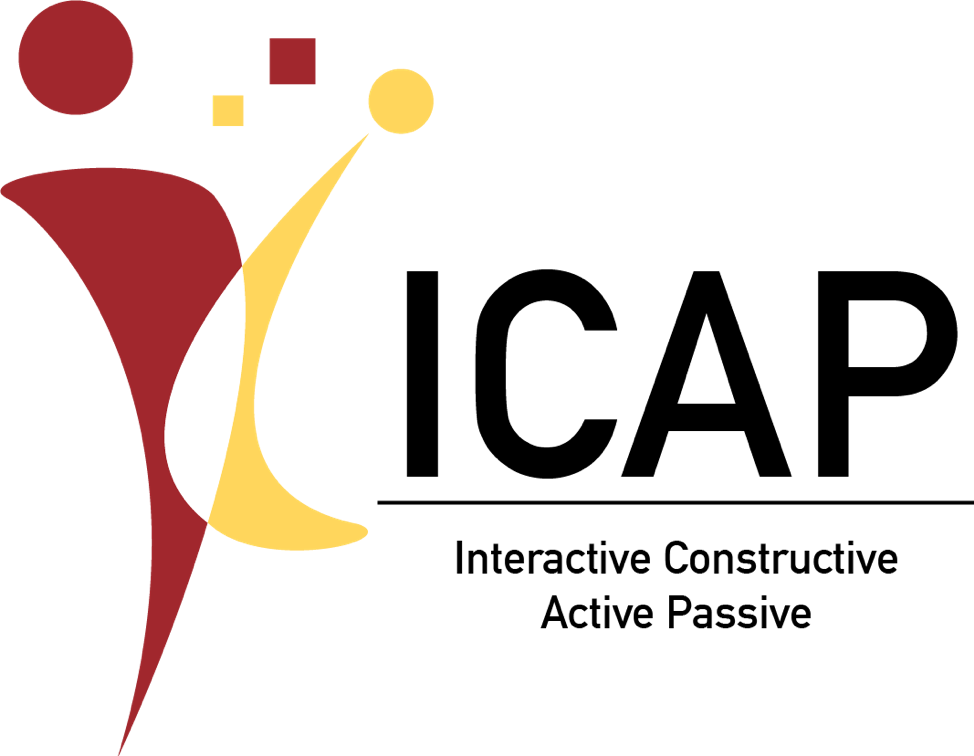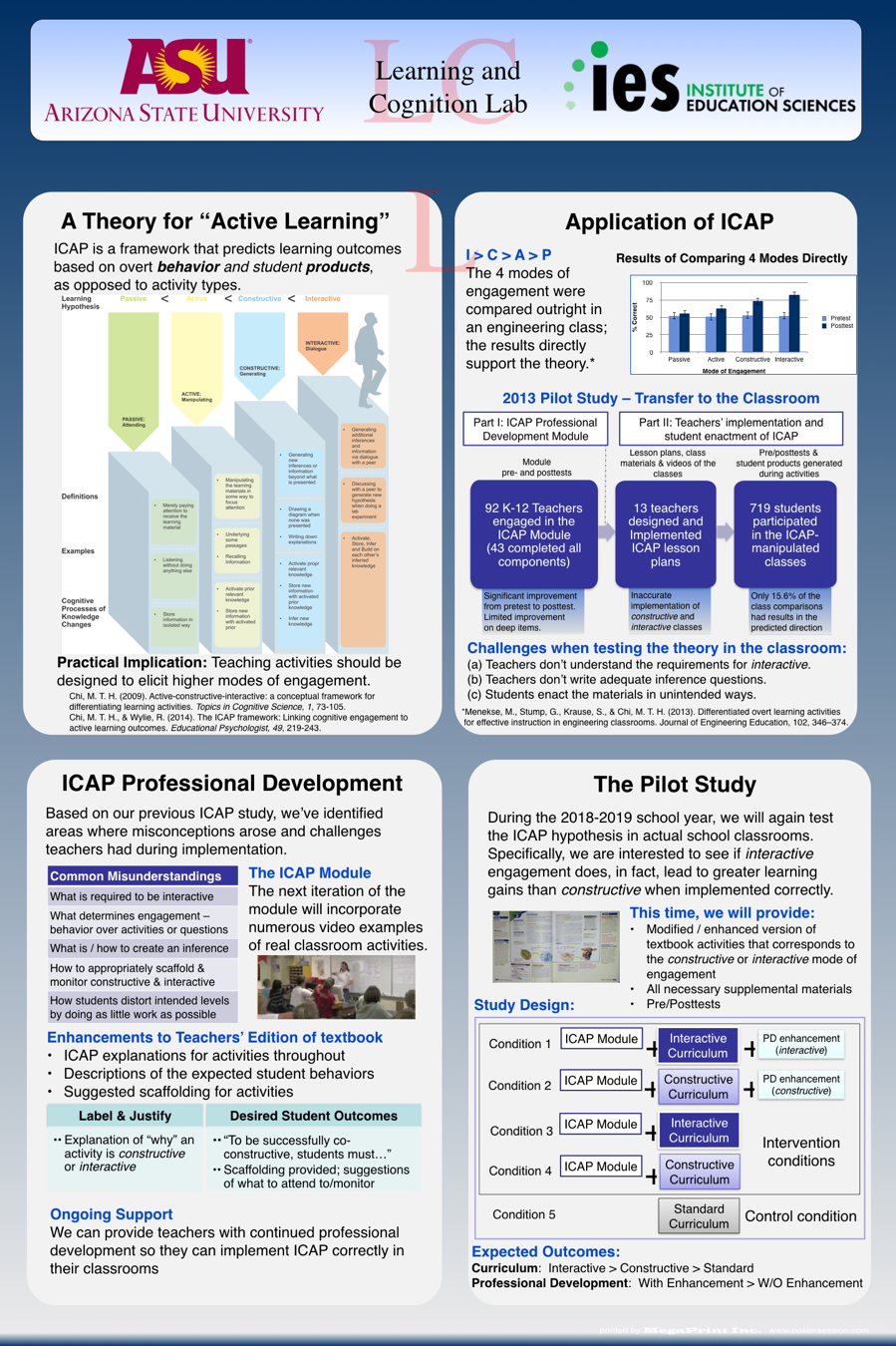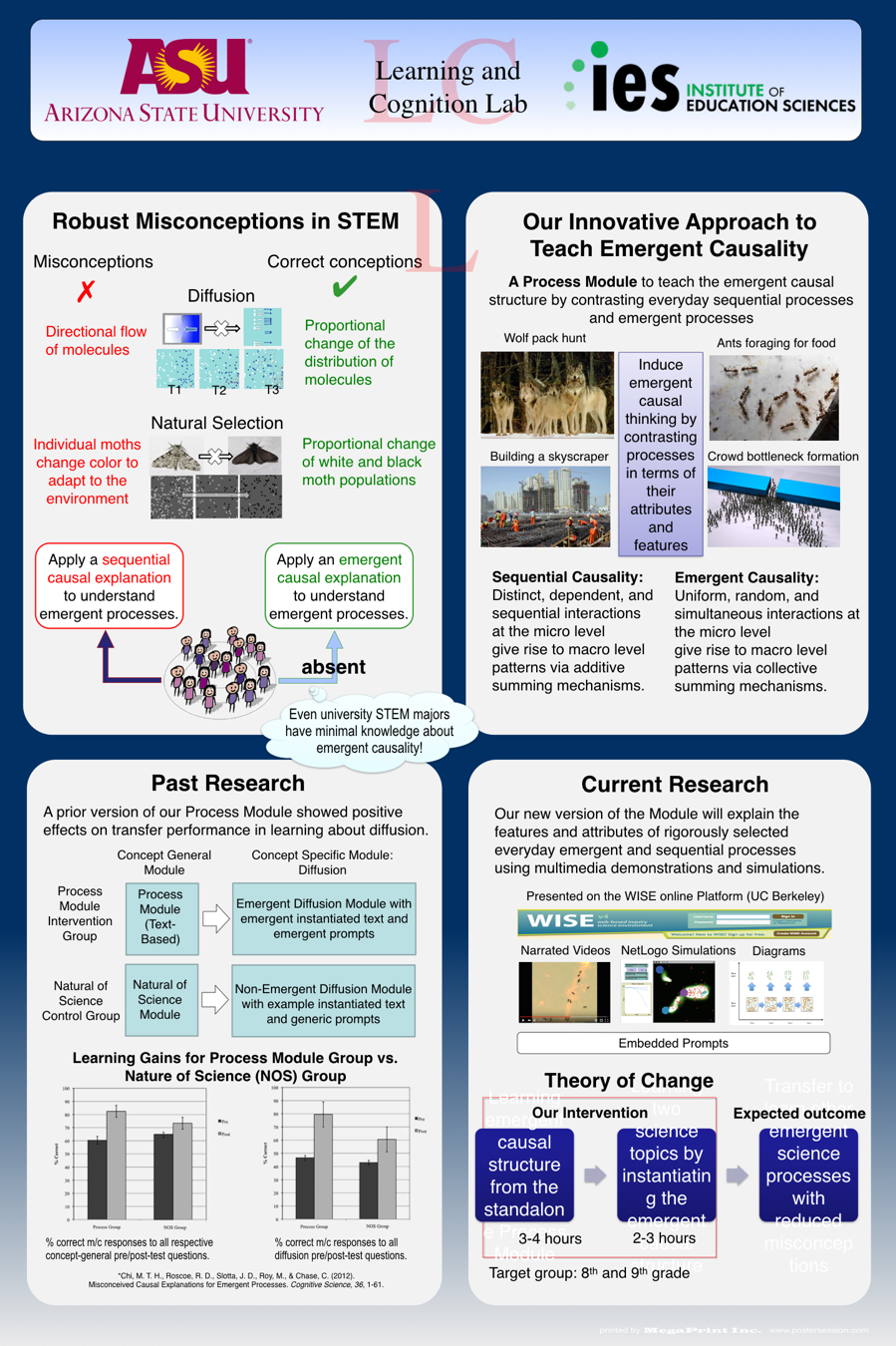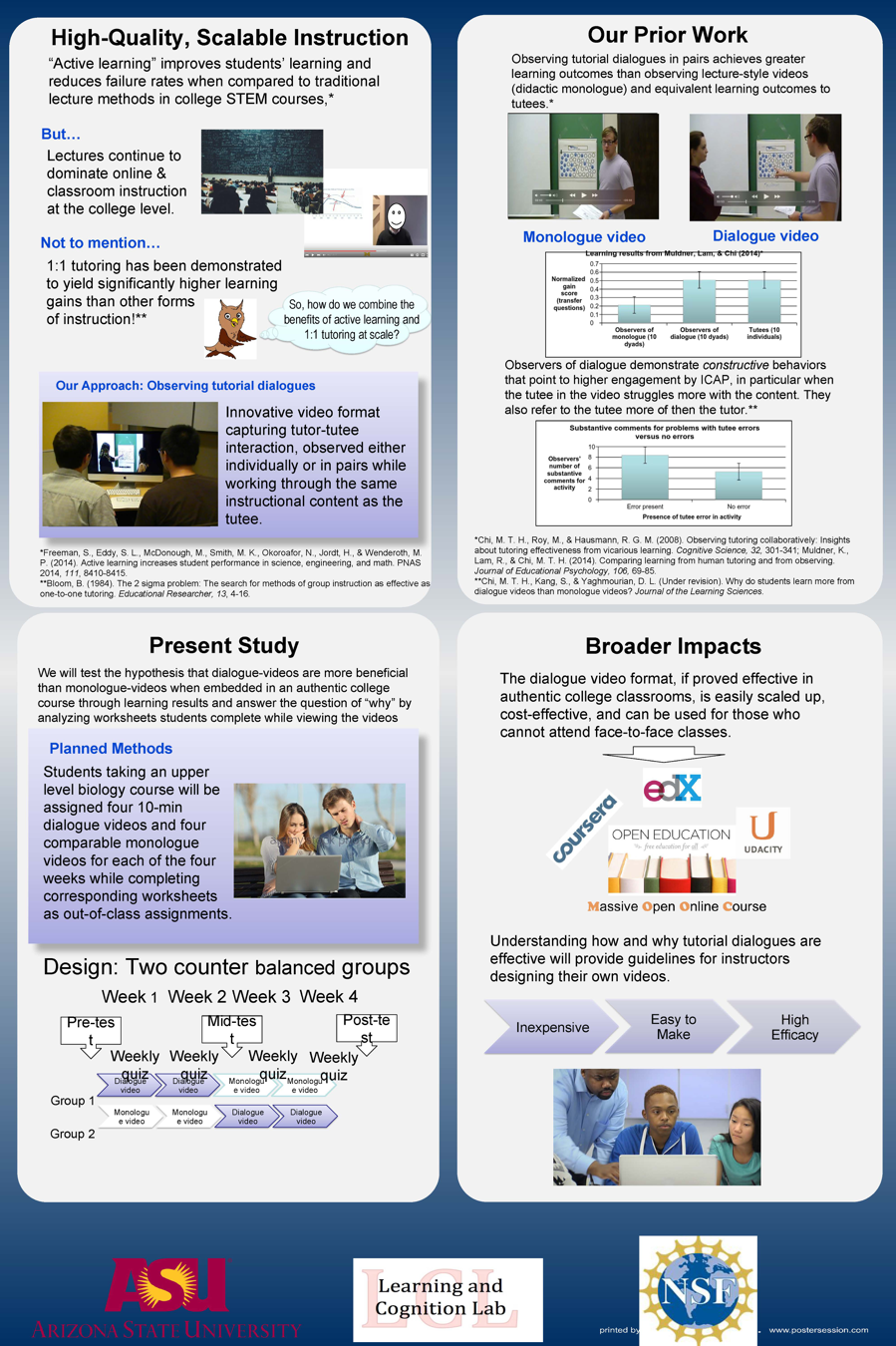
Research

ICAP
Description:
This research team will develop and pilot test a set of classroom activities for use in middle school science classrooms that will support both constructive and interactive modes of student engagement The value of learning actively is widely recognized, yet teachers are often unsure exactly how to select optimal "active learning" activities. Prior work by this team has led to the development of the Interactive, Constructive, Active, and Passive (ICAP) Framework which defines active learning in terms of a set of four differentiated overt modes of engagement that students can undertake while learning in a variety of instructional contexts across a variety of content domains.
Constructive and interactive modes of engagement both provide opportunities for students to generate outputs beyond what is provided in the learning materials, with the main difference being that the interactive mode provides opportunities for constructive dialogue between students. This project builds off of a prior IES funded Development and Innovation grant (Developing Guidelines for Optimizing Levels of Students' Overt Engagement Activities), which developed guidelines for teachers to design or modify their assignments to elicit higher levels of student engagement.

PAIC
Description:
To address students' persistent misconceptions about the cause-effect relations of scientific phenomena, the research team will develop and pilot test an intervention to teach the common structure that appears to underlie many science concepts and phenomena, and in particular, those in which students have misconceptions (i.e., the "emergence" schema). The Principal Investigator's prior work suggests that misconceptions occur when a student incorrectly uses a more familiar schema to explain the cause-effect relations of these types of phenomena. This intervention will be notably different from current instructional approaches in that it will address multiple process concepts and phenomena across a variety of disciplines by teaching the structure that underlies those concepts and phenomena rather than focusing on remediating one misconception at a time.

Vicarious Learning
Description:
Knowing the benefit of active learning is a major issue for faculty teaching undergraduate students in science, technology, engineering, and mathematics (STEM). The importance of increasing student knowledge, retention, and graduation in STEM has become a national concern in regards to maintaining global competitiveness in the STEM workforce. By examining the use of monolog and dialog based videos for instruction in STEM, this mixed-methods (quantitative and qualitative data collection) research study investigates student achievement in relation to students' interest/enjoyment and effort/importance and provides a more complex understanding of active learning. Such inquiries that move beyond laboratory settings and extend to real classroom contexts are particularly warranted. The results from this project could have compelling implications for developing digital materials to facilitate STEM learning. Moreover, as faculty seek new ways to deliver content to students, this study informs the ways in which that content can be delivered.
The goals of the project are (1) to test these novel instructional video formats that merge out-of-classroom assignments with active learning in an authentic college science classroom and (2) to seek an explanation for the influence of monolog and dialog conditions on learning and how these formats mediate student achievement. The research consists of a cross-over design that varies video type (dialog vs monolog video) and counterbalances the presentation conditions of course topics. Analysis of the data consists of first conducting dependent samples t-tests to determine if data from similar viewing conditions (monolog or dialog) can be combined from different points in time. A series of analysis of covariance steps will then be conducted to look for a main effect of the monolog or dialog videos on student achievement measures. Multiple regression analyses will be conducted to determine the relations between video viewing time, survey variables, and student learning.
CURRENTLY ACTIVE GRANTS
- 2019-2021
- Improving Online Learning from Tutorial Dialog Videos. M.T.H. Chi (P.I.) & Y.C. Hong (co- P.I.). National Science Foundation, $600,000.
- 2015 – 2021
- Teaching the Crosscutting Concept of Emergent Cause-and- Effect to Overcome Misconceptions. M.T.H. Chi (P.I.). Institute of Education Sciences, $1,456,431.
- 2015 – 2020
- Developing and Revising Instructional Activities to Optimize Cognitive Engagement. M.T.H. Chi (P.I.). Institute of Education Sciences, $1,456,185.
GRANTS COMPLETED in 2017
- Learning from Dialog versus Monolog Videos. M.T.H. Chi (P.I.), & Sara Brownell (co-PI), National Science Foundation, $249,995.
GRANTS COMPLETED in 2015 and 2016
- Learning from Observing Learning with Dynamic Simulations. M.T.H. Chi (P.I.), The Spencer Foundation Major Grant Program, Award No. 200800196, $500,000.
- The ICAP Module: Guidelines for Teachers to Increase Students’ Engagement with Learning. M.T.H. Chi (P.I.), & Roy Levy (co-P.I.), Institute of Education Science, (R305A110090), $1,399,212. (Coeus Award No. 024405-001).
GRANTS COMPLETED in 2013 and 2014
- 2011 – 2014
- Comprehension SEEDING: Comprehension through Self-Explanation, Enhanced Discussion, and Inquiry Generation. Rodney D. Nielsen (P.I.) (Boulder Language Technologies, CO) and M.T.H. Chi (co-P.I.), Institute of Education Science (R305A110811). Budget for ASU sub-award to Chi, $409,003. (Coeus Award No.024969-001)
- 2009 – 2013
- Using a Cognitive Framework of Differentiated Overt Learning Activities (DOLA) for Designing Effective Classroom Instruction in Materials Science and Nanotechnology. M.T.H. Chi (P.I.) & S. Krause (co-P.I.) (Materials Science Engineering), NSF Engineering Education Program, Award No. 0935235, $400,000.
ICAP

PAIC

VICARIOUS LEARNING
